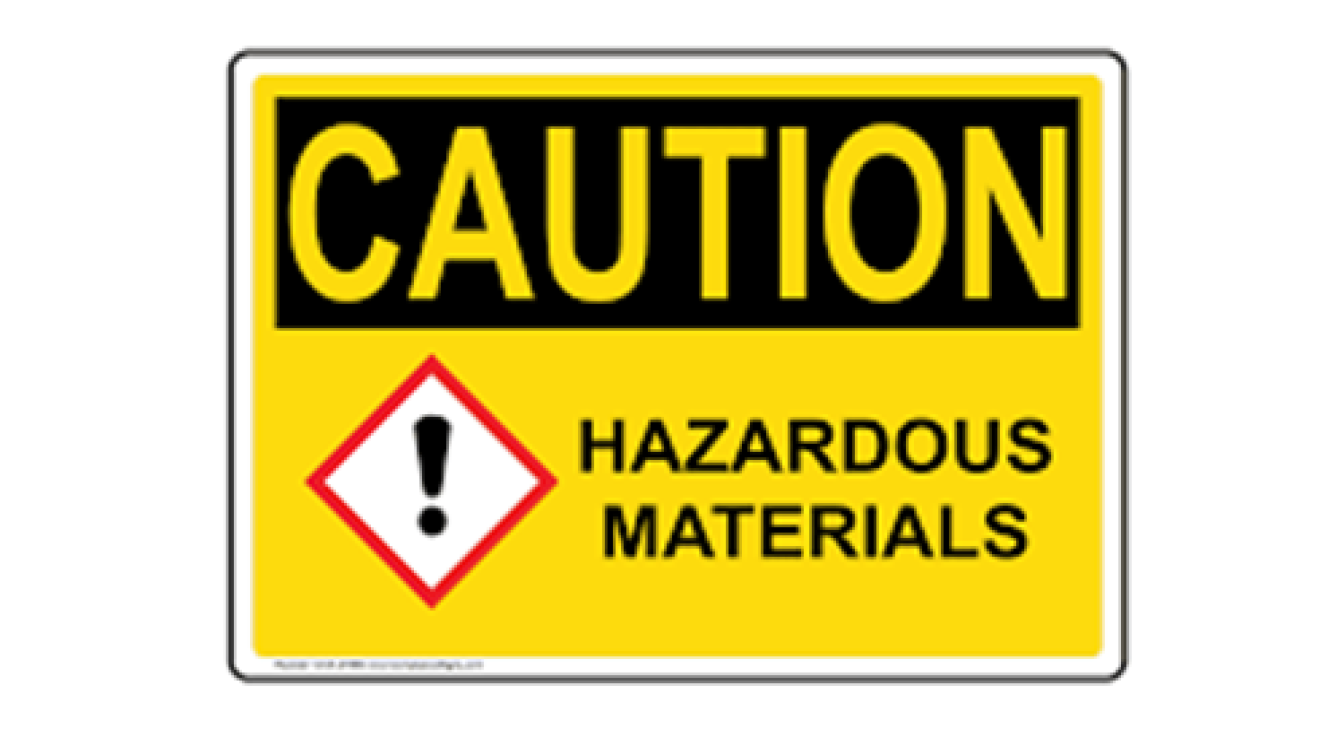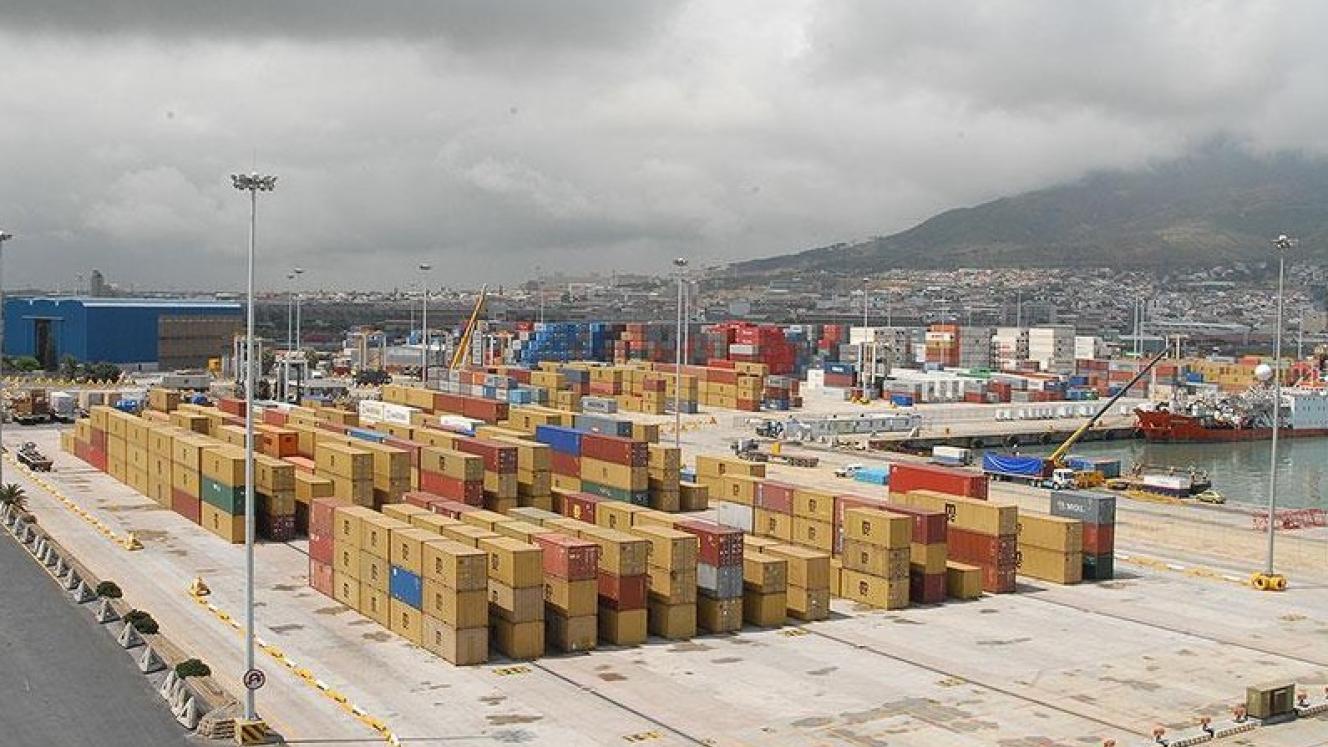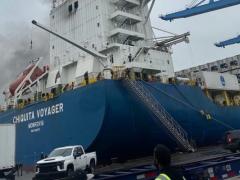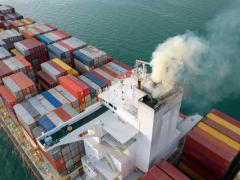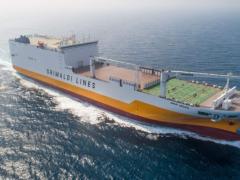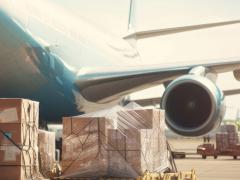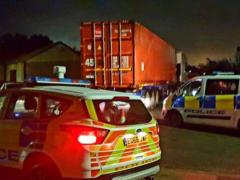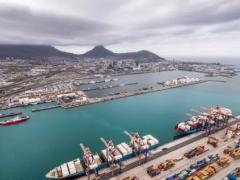The SA Maritime Safety Authority (Samsa) and the Department of Forestry Fisheries and Environment (DFFE) have made good progress in safely removing several tonnes of hazardous waste from the bulk carrier NS Qingdao at the Port of Saldanha on the west coast.
Anton Bredell, Western Cape Minister of Local Government, Environmental Affairs and Development Planning, said that the authorities had advised that a total of 152 skips, each containing five tons of waste material, had been disposed of at the Vissershok High Hazardous Waste Management Site by February 15.
A small amount of contaminated water was recovered from the affected cargo hold, and this has also been analysed and disposed of at Vissershok.
“The salvage operation of the contaminated chemical cargo from the NS Qingdao at the Port of Saldanha Bay is progressing in a safe and well-coordinated manner,” Bredell said.
This comes after the DFFE and Samsa authorised the vessel to commence with the controlled dumping of unstable chemical cargo 250km off the west coast of South Africa in 300-metre-deep water early in January.
Samsa said that this decision had been taken to protect the integrity of the ship and prevent a full-scale disaster where the ship might have broken up due to an onboard fire, potentially polluting the coastline with its cargo as well as the fuel it was carrying.
Emergency personnel had struggled for three months to extinguish the fire, which broke out in October.
Approximately 1450 tons of cargo was dumped during the offshore exercise, helping to bring the onboard fire under control.
The emergency has since been downscaled from a severe maritime emergency to a salvage operation that can be safely managed in port.
Bredell said there had been “excellent cooperation” between the DFFE, Samsa, Transnet National Ports Authority (TNPA), and the commercial owners of the affected ship.
The Western Cape Department of Environmental Affairs and Development Planning has been part of the Joint Operations Committee since the start of the operation in December 2021 when the cargo became unstable and the ship had to be towed out to sea.
Samsa allowed the vessel to dock at Saldanha, after DFFE representatives conducted a vessel inspection offshore and reviewed reports from the chemical and fire specialists. TNPA provided a berth for the vessel when it was convinced that the vessel’s condition was safe.
Bredell said the provincial government was playing an oversight role to ensure the National Environmental Management Act and the National Environmental Management: Waste Act were adhered to.
“We want to be sure that all safety protocols are being adhered to, and that the salvage operation is done in a safe and responsible manner.”
Bredell said Samsa and the DFFE were holding talks with the vessel’s owners and insurers to arrange a medium- to long-term environmental monitoring programme so that any potential future impact could be managed.
The DFFE has initiated an Environmental Impact Study on the ocean dumping aspect of the operation.
This includes the development of drift models and sample collection in the affected area.
Satellite monitoring of the ocean will continue in order to develop a clear understanding of the potential impact the dumping might have had on the environment.
Toxicology testing will be conducted on endemic mussel species, and any suspect marine life that washes up on the beach will be sent for autopsies with a state veterinarian.
